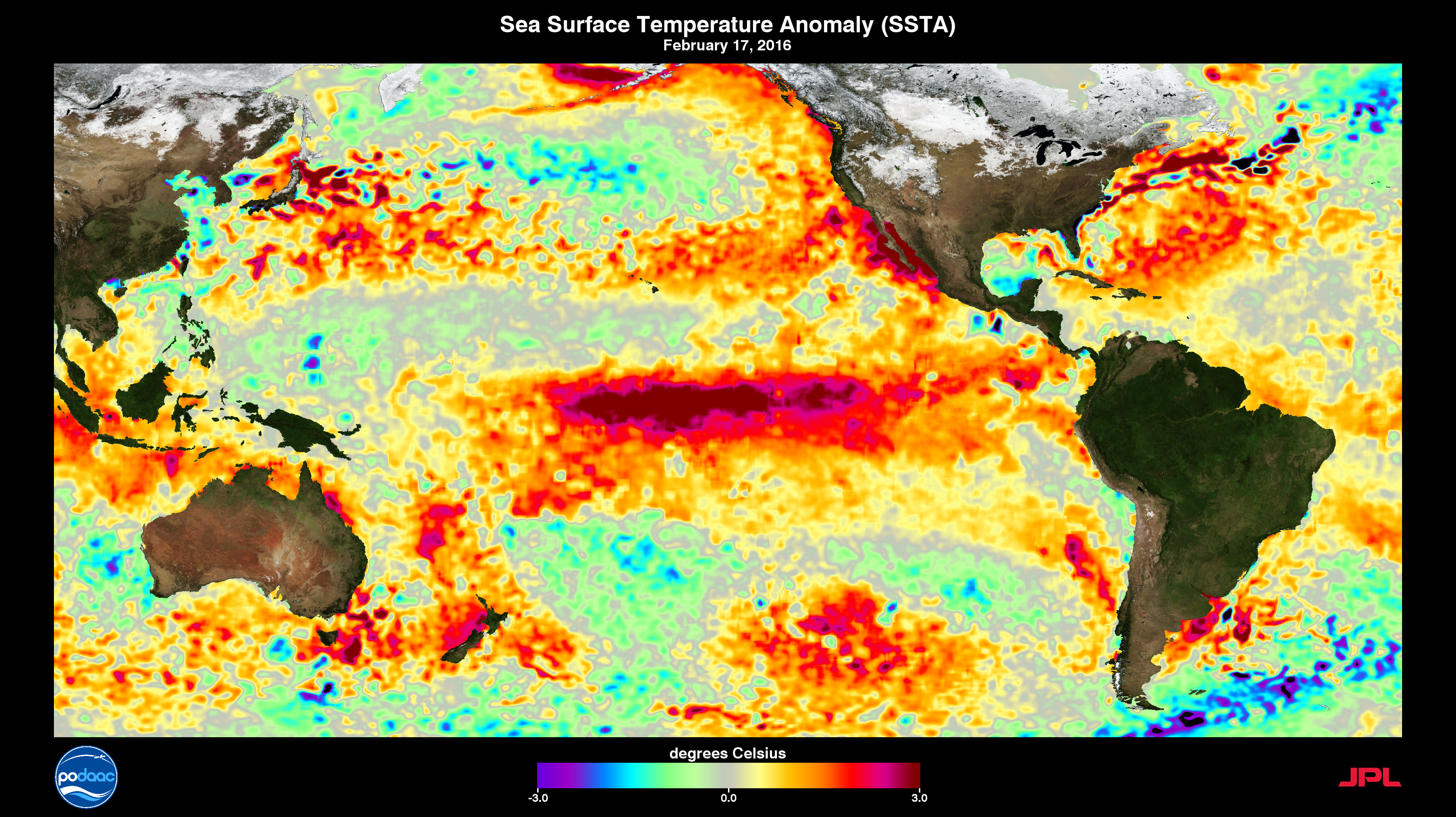Atmosphere, oceans, biomass, glaciers and land surface as interacting components of the dynamics of global climate.
 |
|---|
| Figure taken from NASA.gov |
Group members involved
Adam Bauer, Tyler Hanke, Pappu Paul, Maddie Stover, Rachel Tam, Jay Pillai
Research questions
How do atmospheric processes interact with ocean processes to set the pattern of tropical warming on different time scales?
Recent studies have shown that the cloud radiative feedback has a dependence on the spatial pattern of SST anomalies. The most prominent anomaly in SST patterns within observational records is the El Nino Southern Oscillation (ENSO). There have been numerous studies on the teleconnections and dynamics of ENSO on the atmosphere, but a gap of knowledge exists in the interactions between ENSO and atmospheric radiation. We seek to understand this relationship and diagnose the dominant physical drivers of atmospheric radiation.
How does the warming pattern feed back into atmospheric clouds and circulation?
The climate system’s response to the imposed warming is defined as feedback, which may amplify or dampen the magnitude of warming. The evolving pattern of surface warming is found to be the main driver of the varying feedback, termed as the pattern effect. Clouds, which can give both positive and negative feedback, serve as the major source of uncertainty in determining the global feedback. We are seeking to understand the extent to which the cloud feedback influences the pattern effect.
Highlighted work
Dong, Y., Armour, K. C., Zelinka, M. D., Proistosescu, C., Battisti, D. S., Zhou, C., Andrews, T. Intermodel Spread in the Pattern Effect and Its Contribution to Climate Sensitivity in CMIP5 and CMIP6 Models. Journal of Climate, 33(18), 2020. https://doi.org/10.1175/JCLI-D-19-1011.1
Proistosescu, C., Donohoe, A., Armour, K. C., Roe, G. H., Stuecker, M. F., Bitz, C. M. Radiative Feedbacks From Stochastic Variability in Surface Temperature and Radiative Imbalance. Geophysical Research Letters, 45(10), 2018. https://doi.org/10.1029/2018GL077678
Sources of funding
- NASA
- DOE



